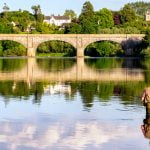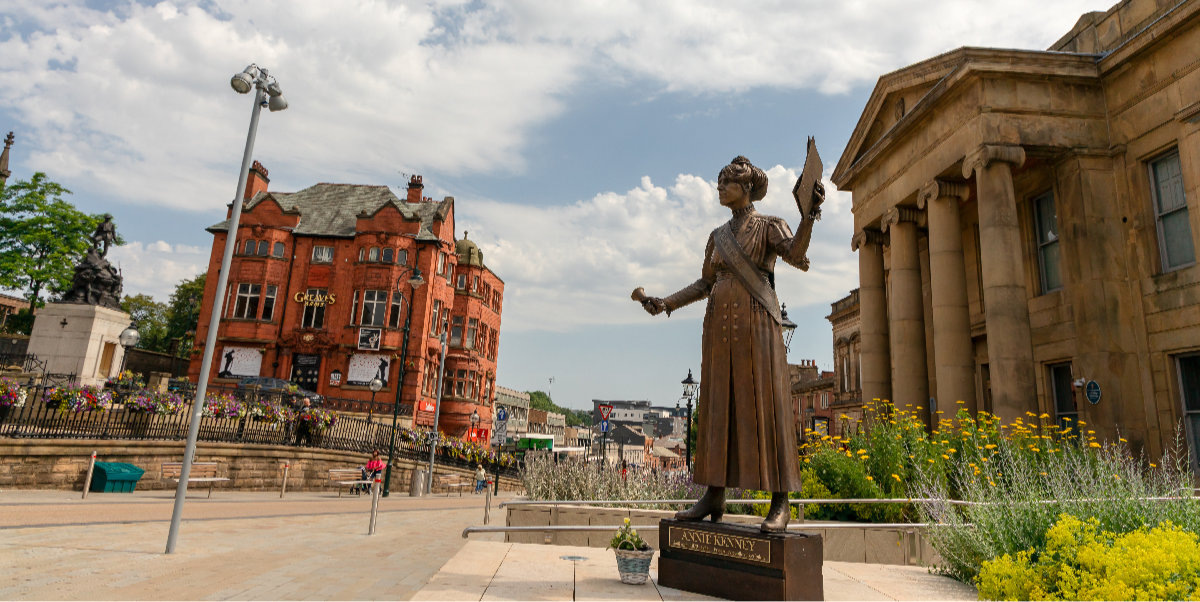
The Five Minute Walk Around Oldham
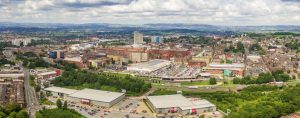
Image: RP Images/Shutterstock.com
There’s more to the town than Oldham Athletic football club!
Nestled in the Pennines, between the Irk and the Medlock, you will find the historic town of Oldham. With 2020 being what it is and the staycation on course to be the new normal for the next few years, towns like Oldham have become our gold dust. With old-age relics, historic monuments, and Industrial era artefacts aplenty, the Greater Manchester area is experiencing a small-yet-determined surge in tourism.
If you are interested in holidaying at home, then come and join us for the Five Minute tour of Oldham. Could this be the staycation destination you have been looking for? Or is it just another post-industrial town that was left to slowly decay given distance from the capital? Let’s take a closer look and find out…
The Early Days of Oldham
There are varying accounts of the early days of Oldham, with some saying it has its roots in Saxon times, and some accounting the naming of the town to be derived from the Vikings. ‘Old’ and ‘Ham’ are both Saxon words for old and ‘town’, but there was also a Norse settlement here that went by the name of Aldehume. This name came from the Danelaw times, around 865 AD.
Regardless of where the name of the town came from, we do know that several settlements have existed in this area since prehistoric times. The earliest known human tools and workings in Oldham date back to the Neolithic period. The town itself also sits on evidence of Bronze Age settlements, as well as on an old Roman Road.
When the Romans cut their road through this area, circa 40 AD, they would have been connecting their northern towns with their southern ones. It was not uncommon for inns and bath houses to spring up along these routes, which might explain some of the findings in the area. Flint arrowheads have been found with an estimated origin some 10,000 years ago…
Post Roman
It is believed that there are several Celtic names in the Oldham area too. Things like Glodwick and Chadderton have a definite Celtic feel to them. What we do know about it is that the Norse settled in 865, named the town officially Aldehume, and started to build a real place out of the ruins everyone else had left behind.
By the 9th century, there was little to report. The Danes would have moved in, perhaps using it as a base to raid from, but more likely settling in the rich arable farmlands of the area. The town would experience slow growth as the Danes stuck together more for protection than for love of their neighbours. By 1066, England had been invaded and Oldham wouldn’t have noticed more than a change in leadership.
Over the course of the next few hundred years, the area was little more than ploughlands, meadows, and farms connected by dirt tracks. It is mentioned a few times in middle-ages documentation, when it is said to have belonged to differing noble families over the years. It stayed in the hands of the minor nobility until textile production saw its popularity surge through the roof.
Oldham leapt into its prime in the heart of the Industrial era, around about the mid-17th century, when coal was first discovered in the area. We will have a little more on that in a moment. First of all, we want to talk to you about the funniest things to have happened here. What are the most interesting facts about Oldham? Let’s find out…
Some Trivia About Oldham
Whether you live there or whether you are eyeing the place up for a potential next home holiday, here are some Five Minutes Spare fun facts about Oldham for you to whip out at parties:
- About a quarter of Oldham lies in the Peak District National Park. If you are looking for a rural stay with access to some beautiful hikes and fantastic photo opportunities, then Oldham should be on your bucket list.
- Don’t forget the Pennines…
- The latter half of the 19th century saw Oldham suddenly skyrocket to global fame as an international fabric manufacturer of distinction.
- Prominent Suffragette Annie Kenney was from Oldham. She received national notoriety in 1905 for heckling Winston Churchill… not bad for an Oldham mill worker.
- In 1900, Winston Churchill himself stood on the steps of Oldham Town Hall to declare that he had been elected an MP of the conservative party… we beat them ill workers loved him for it…
Nowadays, Oldham might be seen as a bit rough and ready… but let’s face it. If a tory MP can stand on the steps and give a speech to a working-class mill town – without being killed? It’s really not as rough as it could be.
There are plenty of things to love about Oldham even if you forego the politics. Go see for yourself – but not until you have read the rest of our article, first.
The Industrial Age of Oldham
The Industrial Era is where Oldham really came into its own. This sleepy little town went from a scattered array of tiny hamlets to one big, booming, cotton-focused industrial town. Fabric and weaving were the staples of the area for about two hundred years, not ultimately dying out until the 20th century.
Oldham was little more than a scattering of roads between Manchester and the south up until the 13th century. During this time, it was owned by the minor nobles. When cotton arrived, Britain was barely ready for it. We were still fulling and dying wool in cities just like Oldham. There were weavers in town, but until cotton arrived, they would have woven sailcloth and stiffer, sack-type fabrics.
The wool industry was designed for places just like Oldham. Generations of sheep rearing in the ample meadows between the small settlements meant wool was everywhere. Once dyed and fulled out, it would be sent downriver to trade in nearby towns or sent on to Manchester itself. In the 16th and early 17th centuries, there was little arable land around the town. When Industrialisation hit in the 1750s, Oldham was the centre of the British hat trade.
Industrialisation arrives
Over the next hundred years or so, Oldham underwent the drastic changes associated with industrialisation. They changed from being a place where weavers were skilled people, to being a place where power looms, mills, and machinery did all of the work. Mass industrialisation often means a loss of skilled labourers and always results in disgruntled workers. In the early days of the Industrial Revolution, that growth was slow by comparison to other townships. It was seen as a place that was hard to get to, that didn’t have arable farmland, and that contained nothing but sheep. As the 18th century rolled around, however, things changed. Arguably, its proximity to Manchester was what drove this change.
The pre-industrial hat business relied on felt, specially produced in this area. It was called ‘Owdham Roughyed’ by locals and was England-renowned until cotton arrived. The first cotton mill went up in 1778, with a total of 12 mills existing after a single year. The rate of mill expansion continued year after year, all the way into the late 19th century. In 1801, the town had a population of 12 thousand people. A hundred years later, it had increased to 137 thousand people. The attraction of work on the cotton mills was obviously a driving factor, but there were other contributions to the population growth, too.
The Countries Cotton Capital
The 1850s saw Oldham rise to become the centre of the textile industry in England. This was aided by the arrival of the railway in 1847 which allowed the easier transportation of their goods given the town was not on the Manchester Ship Canal. What started with a few sheep had grown into a full-blown obsession, with a third of the town’s population involved in the processing of fabric. In the 1860s and 70s, more mills were added, with Oldham being named the most productive cotton spinning centre in the entire western world. Nevertheless, the town suffered from intermittent protesting. Mill workers were poor, and their jobs involved long hours for little recompense. They often took their disputes to the streets, which ultimately encouraged the fight for rights, such as voting, in later centuries.
Between 1861 and 1865, the American Civil War saw a shortage of cotton throughout Lancashire. This meant that mill workers went unpaid and living conditions worsened for about a third of the population. The town council actually put the workers to use in building Alexandria Park, which opened in 1865. This cunning ploy cut the number of poor and probably saved some lives.
The Rise Of Engineering
After the Industrial period and on into the 19th century, cotton spinning began to die off as cheaper fabrics could be imported from abroad. The latter half of the 19th century actually saw the Platt Brothers make machinery for other cotton mills through this area, rather than making cotton themselves. The area became famed for engineering, with many of the mills that went on to spin in Manchester using Oldham Engineered Equipment.
In the 1890s, about 40% of all the population worked in engineering firms. The Platt Brothers created textile industry machinery that supplied most of the developed world, and the area was thriving. Fireproof mills, innovative architecture, and new research drove their success. By 1914, the textile industry was starting to die out, leading to the eventual decline of mill engineering works, too. Around the same time, mining on a grand scale began to fade and some of the towns 14 colliers shut down. When the First World War hit Oldham, it did so at a time when the suffragette movement was in full swing, when the townsfolk were crammed into slum areas with no work, and when a vast population boom meant families were living five to a room – or worse. The start of the 20th century, therefore, was fraught with starvation, poverty, and disease. It is from this period in history that the town’s reputation as being a bit rough comes into play.
Annie Kenny
No history of Oldham would be complete without at least mentioning Suffragette and gender equality activist Anne Kenny whose efforts and sacrifices played a big part in forwarding women’s rights. Despite an extremely hard upbringing stemming from the above, which involved working 12-hour shifts from the age of 13, she would go on to help form the first branch of the Women’s Social and Political Union eventually becoming its deputy leader in 1912. Her achievements although a matte of pride in the town had been commemorated via a plaque since 1999 in December 2018 the more fitting Bronze Statue below was erected. We mention a few famous Oldhamer’s below but Anne Kenny is in our opinion the one most deserved of recognition.
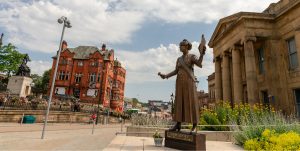
Image: Debu55y/Shutterstock.com
The World Wars in Oldham
Oldham didn’t escape form the World Wars unscathed. WWI saw thousands of young men from the town join up and form buddy regiments. These were military groups that were formed of groups of friends. The Oldham Comrades were the biggest battalion of volunteers to come out of this town, closely followed by the Oldham Territorials. So many men volunteered from this area that they formed two battalions… That’s about 2000 men.
You can read more about WWI in Oldham courtesy of the Oldham Historical Society.
WWII
WWII was a different breed. By then, the government had realised the futility of putting large groups of friends in the same regiments. It was also different because many areas in and around big cities were bombed. Oldham was no exception. Bombs were dropped, homes were destroyed, and in 2014, someone found a bit of an old artillery gun in a playing field at an Oldham school…
Since the war, Oldham has lived through multiple recessions, hundreds of dead and dying businesses, the final and ultimate death of the textile industry in Britain, the re-housing of slums, and multiple food-and-pay related riots. Back in 2001, Oldham was the centre of race-related rioting. It is thought that local Asian to white relations were at their worst ever in the UK. 37 people were arrested for the part they played in it all.
More recently, it seems that the sleepy town of Oldham has become just that… quiet. Although historically part of each and every protest going in Britain, the people of Oldham haven’t rioted in quite some time. The world is watching with interest to see what will happen next. We don’t know either, but we’re pretty sure it will be interesting to find out…
Famous People from Oldham
We interrupt this newscast to bring you further information about Oldham’s people. Can you name five more famous people out of Oldham? After this, you should be able to…
The Five Minutes Spare famous people from Oldham list includes:
- Philip Schofield – you heard it here first.
- Christopher Biggins – the person that won “I’m a Celebrity, Get Me Out Of Here!” in 2007.
- Louise Brown… who you have never heard of, but who was the first-ever IVF baby! She was born, at Oldham General on 25 July 1978.
- Nick Grimshaw – the TV presenter and radio show host.
- David Platt – ex-captain of the English football team.
There’s a fun five for you to throw out at parties, should you be spending any time in Oldham. Now that we have covered famous faces, there’s not much left to say about the history of Oldham. From this point forward, you are part of it. Make every moment count!
Things to do in Oldham!
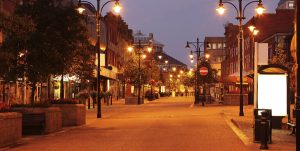
Image: Alastair Wallace /Shutterstock.com
Congratulations! You have arrived at the best part of all! The best things to see and do in Oldham, should you be visiting for a holiday.
Historic Sights and Landmarks
The Civic Hall is where most activities take place in Oldham. This place is big enough to catch a pantomime in, come Christmas time. Its’ also where any public meetings would have taken place historically, as well as those council sessions where you are allowed to go along and heckle.
Alternatively, Uppermill Library is one of the oldest buildings in town. As a side note, it’s also beautiful, making the ideal place for Instagram pics of Oldham.
Museums and Galleries
The Gallery Oldham is a great place to browse some of the fine art accumulated in the town over the years. You can buy a painting by a local artist, enjoy an exhibition, or just have a wander around. Creativity is valued here more than it is in most towns. You should head along to the Weaver’s Factory, too, if you enjoy creating things yourself. This place is like an artist’s studio, but it is open for your input. Have a look for yourself and tell us if you make anything nice.
As for museums in Oldham, check out the Saddleworth Museum and Art Gallery. This place has all the local history from the days back when Oldham was still separated into its many smaller parts. If you want to research the area, this is where you should go to do it.
Outdoor Attractions
We wouldn’t be doing Oldham justice if we forgot to include the rare beauty you can find at Dovestone Reservoir. This is a favourite dog walking place but is also favoured in the summertime when the natives want a nice place to sunbathe in. It’s actually a national park, with lots of wildlife finding a habitat
Taking a walk, hike, or camping trip, in Tandle Hill Country Park, is a local favourite pastime. If there’s one thing that Oldham has a lot of – it’s countryside. Tandle Hill is one of the oldest country parks in the area and represents a breath of fresh air away from the hustle and bustle of Manchester.
Third, in the Outdoor Attractions category, we turn to one of the best things to do in Oldham with kids… taking a trip to the Lancaster Park and Animal Farm. This children’s petting zoo combines outdoor and indoor play with learning about animals… they have baby pigs.
Recreation
We would be remiss if we didn’t do a special mention to the Stonerig Raceway. Started many years ago as a Scalextric supporters club with a toy racing track, this place has become a full-blown raceway over the years. It’s brilliant for younger visitors as they love the toy cars.
Sport in Oldham
You know we love our football here at Five Minutes Spare (well some of us do anyway) and where better to start with our brief sporting coverage than with the Towns main professional club Oldham Athletic FC. They have been around since 1895 (then Pine Villa FC) and if you fancy taking in a game then you can watch them at Boundary Park, a local landmark and a quite impressive stadium to boot. Crowds these days tend to be well below capacity so you should be able to enjoy the atmosphere without having to book a ticket. This has not always been the case though as the team has had some purple patches in the past, finishing runners up in the 1st Division ((now the Premier League) back in 1914-15 and they more recently reached the Football League Cup Final in 1990.
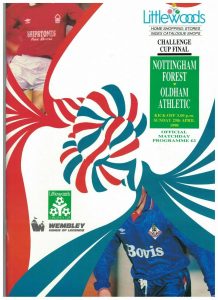
For those that enjoy the oval ball, you can find the Oldham RLFC rugby club in town too. Also, let’s not forget that this is a British town. It might be near Manchester and fairly northern, but that doesn’t make it any less likely to have a golf club. In fact, there’s a choice. Chose from Crompton & Royton Golf Club, Werneth Golf Club, or Oldham Golf Club, to get your game on.
Shopping and Retail
The Spindles Town Square and Shopping Centre is unarguably the retail centre of Oldham. You will find a spattering of shops elsewhere, but if you want clothes and snacks, this is the place.
Other Notable Attractions in Oldham
There is just so much to see and do in Oldham that we had to add an extra section to catch the things that we missed. Here are some of the attractions that we adored – but that we just couldn’t fit in…
- Alexandra Park was built as a distraction to the cotton workers during the strike in the 1800s – and still runs a beautiful fountain to this day.
- Little Owl farm is a fantastic place to take the kids for something fun to do in Oldham.
- Cheeky Chimps Play Centre is another great day out with the kiddies.
- Visit George Street Chapel in Oldham if you are of a religious nature and want to worship while on holiday.
You should never be stuck for something to do in Oldham… there’s just so much choice!
How to Get to Oldham?
We can’t leave you without telling you how you get there.
By Road
Head to the east of Manchester and follow the M60 north.
By Rail
You want to aim for Oldham Central train station.
By Air
Manchester airport is your nearest airport.
By Sea
Oldham is landlocked and a fair distance from either the River Medlock or River Irk. Oldham never even made it onto the Canal Network and one can only wonder historically how much more successful it would have been had it done so!
Still Searching for the Ultimate staycation?
Here at Five Minutes Spare, we have all manner of travel destinations right here in the UK, so you can make the most of your next holiday…even if you have to spend it at home. Have a browse and remember to drop us a follow on Facebook. You never know when you will need something to kill five minutes with.

